Why Lincs contractor Rockscape relies on subsoiling toolbar
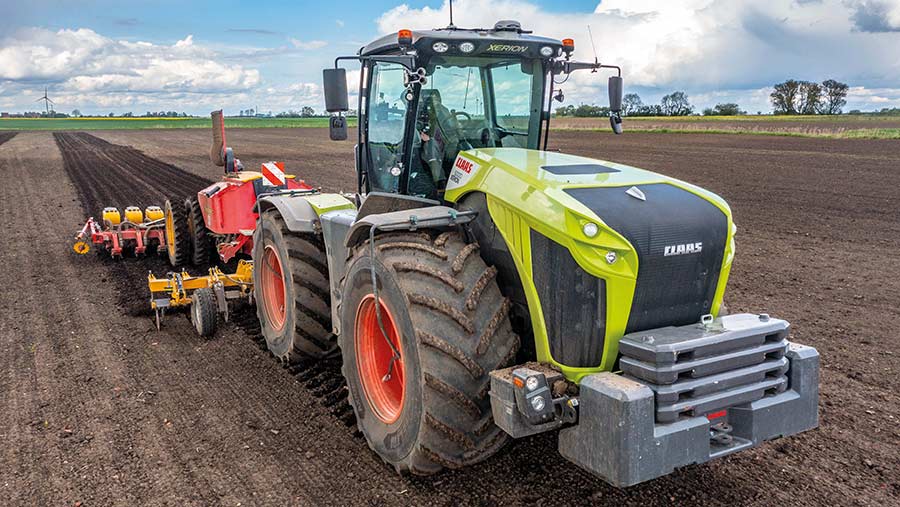 Claas Xerion LDT and Tempo drill © MAG/Oliver Mark
Claas Xerion LDT and Tempo drill © MAG/Oliver Mark Going cold turkey with tillage to slash establishment costs and improve long-term soil health comes with an inherent risk to crop yields, so Scunthorpe-based contractor Rockscape opted for a more versatile tool to feather down its reliance on multi-pass soil preparation.
It came in the form of Grange Machinery’s Low Disturbance Toolbar (LDT), which can be run in combination with different drills and cultivators, and at varying depths, to suit the field conditions.
Perennial, all-acre subsoiling might be considered a little uncouth by the zero-till zealots.
However, with profit margins to maintain, it provided farm business manager Aaron Kew with a less perilous transition from ploughs and power harrows to something closer to a direct drilling system across the 2,400ha under his care.
See also: Bespoke Stripcat drill expands companion cropping options
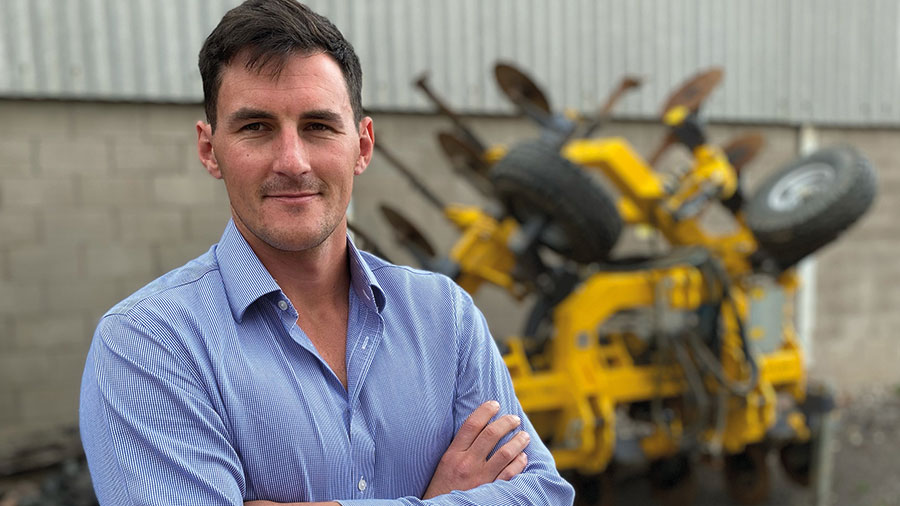
Aaron Kew © MAG/Oliver Mark
“We’re never going to be evangelical about direct drilling, and our land is going to need help from the subsoiler for the next few years,” says Mr Kew.
“The aim isn’t to abandon all cultivations but to be as efficient as possible, maintaining a balance between crop performance and the environmental goals of both Rockscape and the farms that we manage.
“Some of the land is pure river silt, so it is prone to losing aggregation and turning to cement.
“It has high yield potential but still needs a leg through it – at least in the short term, until we can get cover crops to do more of the work for us.”
“Sacrificing subsoiling will only save us £51/ha in establishment costs yet could lose us 2t/ha in yield compared with direct drilling.
“At the current price, that’s a drop of £500/ha, so isn’t a gamble worth taking,” he explains.
Rockscape’s Grange LDT
- Width 6m
- Number of legs 12
- Point width 90mm
- Disc diameter 450mm
- Maximum working depth 300mm
- Leg protection Shear-bolt
- Price paid £27,000
Change of system
The first milestone in this change of direction came two years ago with the streamlining of the cropping system across Rockscape’s two biggest contract farming agreements.
This saw roots and tubers, including sugar beet, potatoes and carrots, wiped from the rotation.
“Although they brought in good rental incomes, harvesting them – in mid-winter or in pouring rain – was causing long-lasting damage to the soil structure.
“The value of renting out land for root crops was high, but the long-term damage was a problem and we’ve decided to prioritise soil health over year-on-year margin,” Mr Kew says.
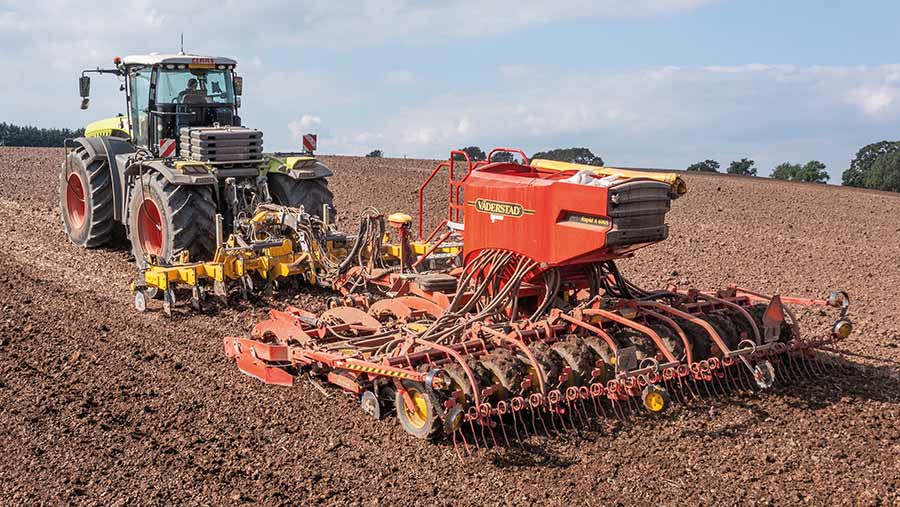
Rockscape’s Claas Xerion pulling the LDT and Vaderstad Rapid drill © MAG/Oliver Mark
Gone, too, are the four-track crawlers, 11-furrow plough and an assortment of power harrows that were required to bash the soil into submission.
Instead, the focus is now on broadacre arable crops with a strong margin and lower establishment costs.
These can make the most of the digestate from an on-site 2.5MW gas-to-grid plant – which, along with chicken muck, has halved the firm’s use of synthetic fertiliser – and allow for better integration of cover crops.
It also means most of the fieldwork can be completed in-house, giving Mr Kew more control over the timing and type of work undertaken to best suit the conditions. And central to that is the 6m LDT.
Flexible system
The main attraction of the toolbar is its versatility, with Mr Kew able to run it as a standalone implement; in front of a 6m Vaderstad Tempo precision drill for oilseed rape and maize drilling; ahead of a Rexius Twin press to level stubbles; or leading a brand-new 12m Horsch Avatar for cereal sowing.
“We cover a large area with every soil type imaginable, from blow-away sand to heavy red brick clay, so we need to be able to adapt to the conditions,” he says.
The LDT’s primary role is variable-rate drilling of some 400ha of oilseed rape in combination with the Tempo.
The crop is a cornerstone of the rotation, with its 4.5t/ha average delivering the biggest margin for both the contracting business and the landowners for each of the past four years.
“Introducing the LDT has really helped us nail down a system that works. We drill as early as possible, so it will be out this week [1 August] and won’t stop until the second half of the month.
“It’s much easier to manage a forward crop than one that is struggling, and the quicker it is established and away, the less the yield potential is limited.”
Working speed is typically 10kph, with slug pellets and a starter fertiliser applied at the same time – usually DAP, or straight ammonium nitrate if the phosphate index is high.
The depth of the LDT’s 12 legs is adjusted to suit field conditions, but for rapeseed is typically 150-200mm (6-8in.
“We just want to fracture the ground and encourage the crop to get rooted and find moisture,” Mr Kew says.
“We’ve had it down to 280mm [11in], but that’s at the limit of what the tractor [a Claas Xerion 5000] can handle on heavy land.”
The biggest problem has been keeping the front 400mm-diameter slot-forming discs in the ground in bone-dry conditions, as the rubber-cushioned clamps they are mounted on allow too much upward movement and they have a habit of bouncing out of work.
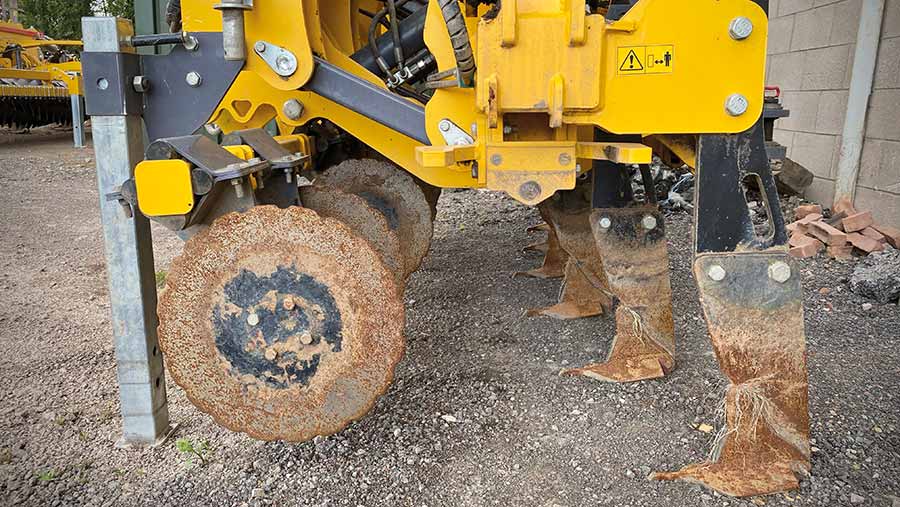
© MAG/Oliver Mark
As a result, they can let too much uncut trash past, which subsequently bungs up on the subsoiler legs – particularly when there is a lot of flat straw.
This was solved by upgrading to 450mm-diameter discs – the biggest ones able to fit under the LDT frame – earlier this year.
“They stay in the ground much better, though I still think they’d benefit from being mounted on a hydraulically controlled bar where down pressure can be varied to exert more force on really hard ground.”
Mr Kew has also switched to super-narrow 90mm points that provide adequate soil heave without dragging big clods to the surface.
“Anything with a substantial wing brings lumps the size of a horse’s head to the surface, and these end up bashing the drill about. Plus, the narrower point is easier to pull, which should reduce fuel consumption and increase output.”
The points are coated in Ferobide filings, with a tungsten tile at the top of the shin to protect the main wear spot.
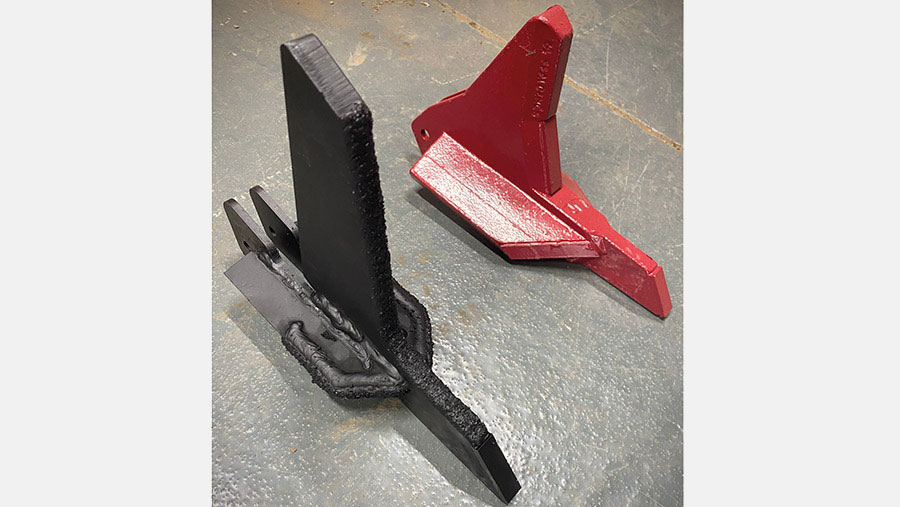
Low-disturbance points minimise the risk of dragging clods to the surface © MAG/Oliver Mark
Establishing cereals
The 1,800ha of cereals is prepared and drilled in various ways, depending on the conditions.
Where compaction isn’t an issue, and there is little chopped straw on the surface, Mr Kew intends to go straight in with the Avatar, which recently replaced a Vaderstad Rapid.
But the LDT comes into play to lift any wheelings left by the Samson tanker following a digestate application.
It can also be coupled with a Vaderstad Rexius packer/press armed with shallow-working tines and levelling boards to level the ground and help conserve moisture.
Years of ploughing means furrow brows are still visible in places – something the Avatar’s straight, slot-cutting discs can do little to remedy.
There’s also the option of blitzing through separately with the Terrano cultivator, with its narrow tines loosening the soil down to 200mm (8in) and discs churning the top 50mm (2in) – crucially, without mixing soil through the profile.
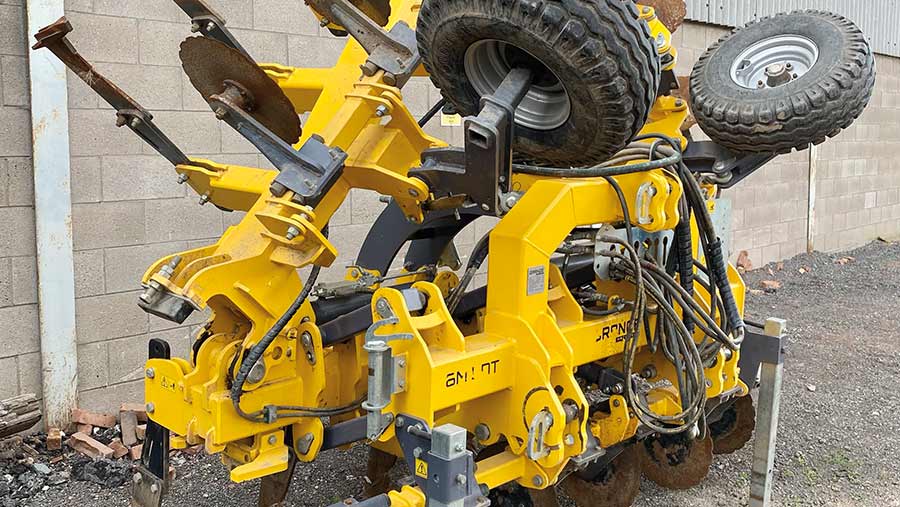
© MAG/Oliver Mark
The aim is to hit a decent forward speed of roughly 16kph, which maximises the boiling of the top layer to incorporate trash and encourage a flush of weeds.
This is often the case following a rapeseed crop when the soil tends to be left slightly ridged and the stubble is long, in preparation for drilling a catch crop with a Grange LDL subsoiler and Vento seeder (see box).
“It’s all about managing the transition by finding out which situations direct drilling works and which it doesn’t – ideally with as few mistakes as possible,” Mr Kew says.
LDL subsoiler expands cover cropping opportunities
Earlier this year, the business took delivery of Grange’s mounted 6m Low Disturbance Loosener subsoiler.
It has auto-reset legs set at the same 50cm spacings as the toolbar but is fitted with 125mm wings that offer slightly more heave and fracturing of the soil.
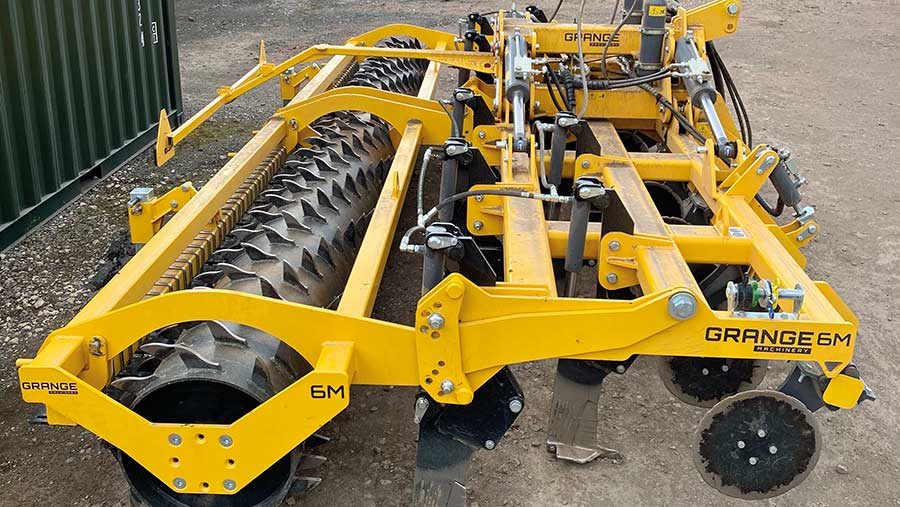
© MAG/Oliver Mark
With the toolbar and Vaderstad Tempo busy drilling 400ha of oilseed rape through the first three weeks of August, Mr Kew needed another means of alleviating compaction and preparing the ground for cover and catch crops promptly after harvest.
To do so, the LDL can carry a Vento applicator with spreader plates behind the legs.
Cover cropping is set to be an increasingly important aspect of the reduced-tillage regime, improving soil structure, organic matter content and moisture conservation and, in time, significantly reducing the reliance on machinery.
Mr Kew has settled on a mix of phacelia, vetch, linseed, berseem clover and oil radish, bulked out with home-saved oat or rye seed, with the aim of keeping the cost under £25/ha.
“I’d like to get the cover crops to do 90% of the work,” he says. “They’re currently doing 40%, which means 60% is down to the cultivations. Hopefully that balance will shift over the next few years.”

